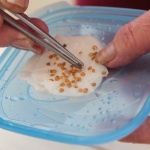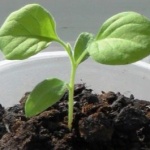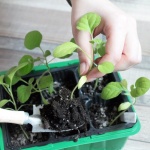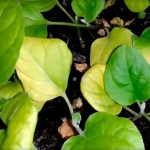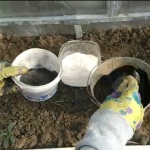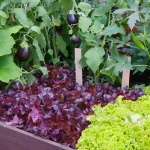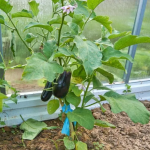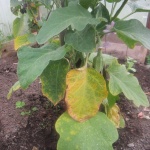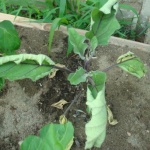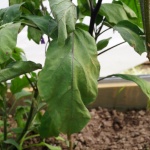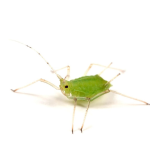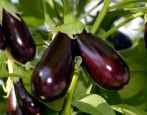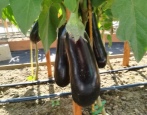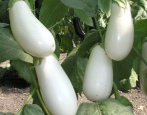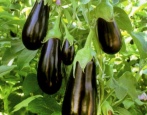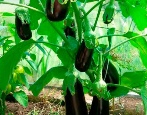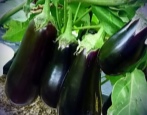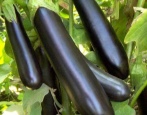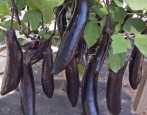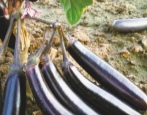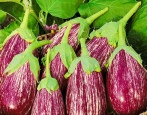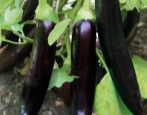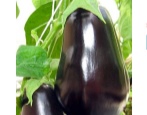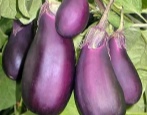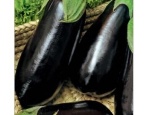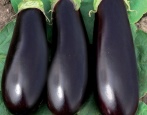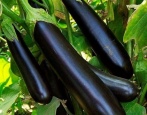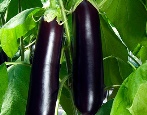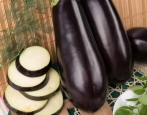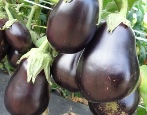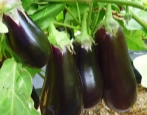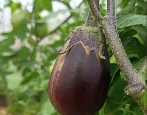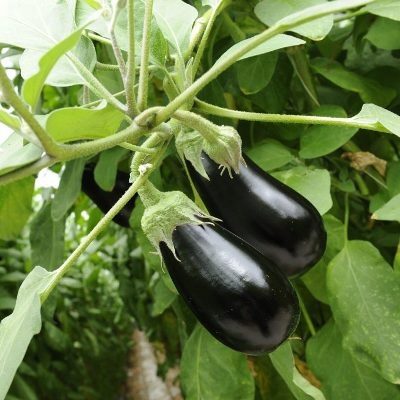
- Growth type: vigorous
- Bush height, cm: about 100
- Fruit size: very large
- Fruit shape: elongated pear-shaped
- Fruit weight, g: up to 1000 and more
- Yield: medium-yielding
- Fruit color: deep purple
- Ripening terms: mid-season
- Pulp (consistency): juicy, dense
- Color of the pulp: creamy white
Eggplant Marzipan is a representative of the domestic selection. The variety is quite young, but many summer residents have already fallen in love with it due to its unpretentiousness in care, as well as the beautiful appearance of the fruits.
Breeding history
The Marzipan variety is a hybrid crop and is marked F1. The seed company "Russian Garden" is considered to be the producer.
Description of the variety
The vegetable can be grown not only in the beds, but also in greenhouses and film greenhouses. The advantages of the variety include an excellent appearance and taste characteristics (complete absence of bitterness). Bushes and vegetables tolerate sudden temperature changes and short droughts.
Of the minuses, it is noted that the seedlings are very fond of sunlight, and adult bushes are also demanding on this. With a strong darkening at the time of the formation of the ovaries, future flowers and the buds themselves may begin to fall off.
The branches of the bush are very thin, and if the fruits are not tied up, the stem will break. The culture does not tolerate watering with cold water, the leaves begin to gradually curl and turn yellow. As mentioned earlier, eggplant belongs to hybrid forms, so independent seed reproduction is impossible.
Characteristics of the appearance of plants and fruits
Bushes are classified as vigorous plants. The average height of the stem reaches 1 m. The main shoot is erect, the lateral ones may have slight branching and slope. The leaves are large, green, matte. The surface of the sheet plate has a roughness and small villi.
Peduncles are formed singly and very rarely gather in small inflorescences.
The fruits are large and large, they are elongated pear-shaped in shape. The sizes of vegetables are as follows: the length is 15 cm, and the diameter of the fruit is 8-9 cm. By weight, eggplants can be up to 1000 g, but there are also more weighty ones.
The skin is dense, firm, glossy-shiny, dark purple in color. The pulp is juicy, dense and tender, it is creamy white in color. The number of seeds is small. They are medium in size, pale yellow in color.
Purpose and taste
The pulp of the fruit has a pleasant and mild taste without the characteristic bitterness. Therefore, the vegetable can be used in almost all dishes. Eggplants are also used to make preparations for the winter, canned, frozen and dried.
Ripening terms
The culture is mid-season, the number of days from germination to harvest averages from 120 to 125 days.
Yield
In unprotected soil conditions, from 2 to 3 fruits can form on one bush. The yield in this case will be from 1.5 to 2 kg. In greenhouses, from 4 to 5 fruits can already be born on one bush, and this will be approximately 3-4 kg.
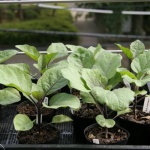
To get a tasty and bountiful eggplant crop, you must first grow strong and healthy seedlings. This culture is considered very capricious, therefore, you need to take care of seedlings when growing at home as correctly and carefully as possible.
Growing and care
Eggplants are grown only in seedlings, so it is necessary to prepare all the ingredients for this.
You can germinate the culture in large seedling boxes, in small common containers, well, in separate pots. The latter option is considered more convenient, but not very ergonomic, since it will take up a lot of space.
The soil should be prepared in advance. It is best if it is light and very nutritious. For self-preparation of the soil, it is necessary to use humus, sod soil and a baking powder (sand or coconut fiber).
The seeds should be buried in the soil by 2 cm. The soil is pre-spilled with warm water. After sowing, the containers are covered with foil or glass. It is necessary that the temperature under the glass is + 25 ° C. Every day the film is removed for 10 minutes to ventilate the container.
As soon as the seeds hatch, the film can be removed, and the containers can be moved closer to the windowsill. If the seedlings were sown in one container, then picking will be necessary. It is carried out in the presence of two full-fledged leaves.
After the first shoots appear, sunlight should be adjusted. Daylight hours should be at least 10 hours. But not in all regions the weather can please summer residents so much. To avoid slowing down the growth of seedlings, a UV lamp or just an LED lamp is purchased.
The soil in the containers should be moist, but not too much. Therefore, all watering is carried out through a spray bottle.
For 14 days, young seedlings are taken outside for hardening. At this time, the site is prepared, excess weeds are removed. The day before disembarkation, everything is spilled with a lot of water.
When transplanted into open ground, the seedlings should have 8 to 12 strong leaves.
Marzipan bushes are quite tall, and the crown is spreading. Therefore, when forming holes, it is best to use the following scheme: there should be a distance of at least 35-40 cm between the holes.
Since the fruits are very heavy for the plant, it is necessary to think over the tying system. Gardeners recommend driving the pegs into the hole before the plant is planted. Otherwise, you can touch or even damage the root system.
Watering should be done every 3-5 days in cool weather. And during a prolonged drought, focus on drying out the soil. Water should be poured directly under the root, avoiding contact with foliage, as this can provoke sunburn.
For feeding, you can use organic and mineral fertilizers. It is best to use a mixture of urea, potassium sulfate and superphosphate, and potassium salt, nitrogen and phosphorus are also suitable.
Periodically, the bushes are examined for pests. If the localization of insects is small, then they are collected by hand. If the volume of work is large, then insecticides are used.
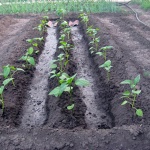
Planting eggplant is one of the most important stages in growing. When choosing a place for eggplants on your site, it is important to remember that this culture should be in warm soil, constantly illuminated by the sun. The plant is also very fond of spacious, open spaces, since its roots can grow over sufficient areas.
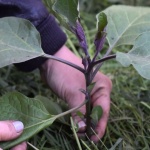
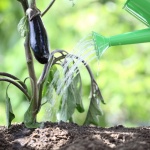
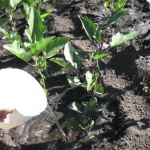

Eggplant is one of the most demanding crops. For its successful cultivation, it is necessary to create optimal conditions, as well as to carry out prevention and fight against diseases and pests. Eggplant often infects both fungal and viral diseases. If treatment is not started on time, you can completely lose the crop.
